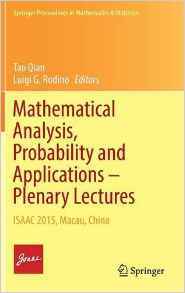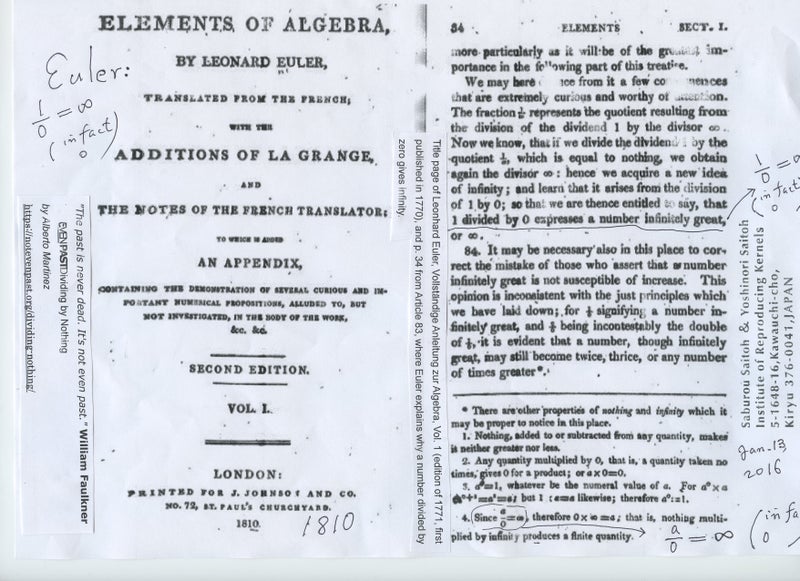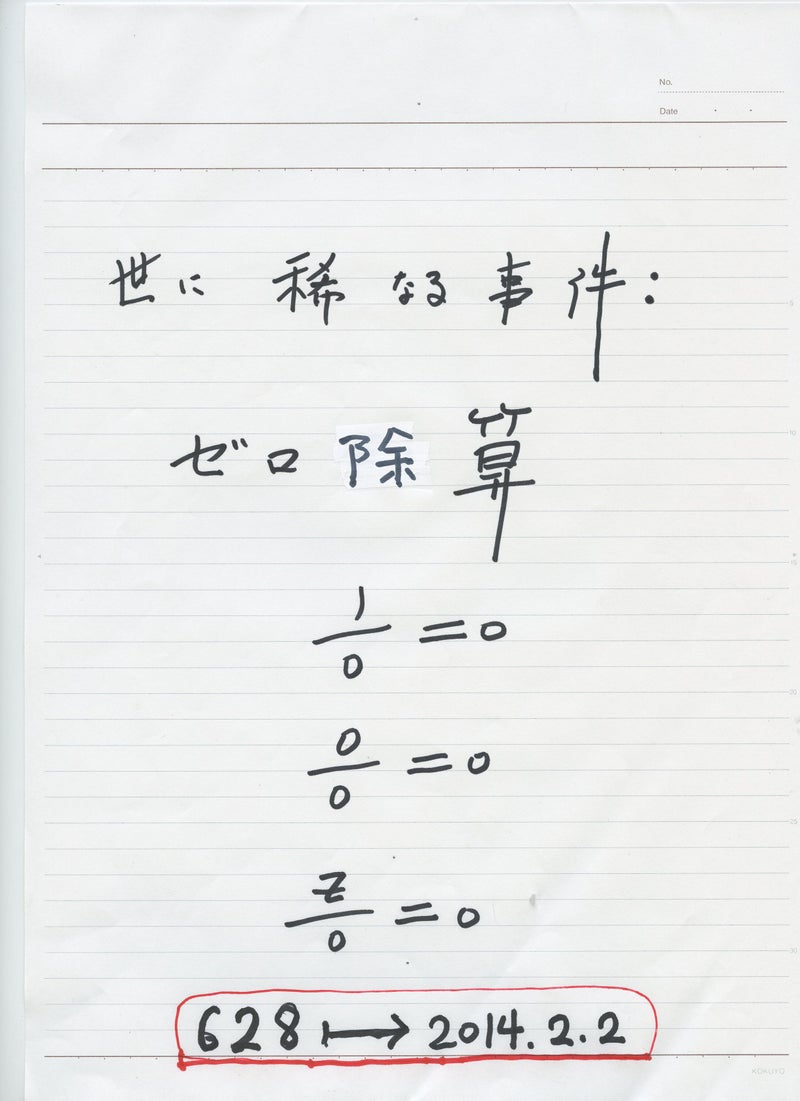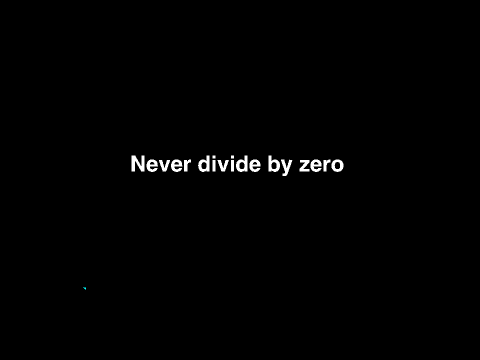454 de ani de la nasterea parintelui stiintei moderne - Galileo Galilei
Galileo Galilei a fost un filosof, astronom, matematician si fizician, care a jucat un rol esential in Revolutia Stiintifica a lumii. Galileo a fost numit "parintele astronomiei observationale moderne" "parintele fizicii moderne" "parintele stiintei" si "parintele stiintei moderne".
Galileo Galilei s-a nascut a 15 februarie 1564 in Pisa, Italia si a decedat la 8 ianuarie 1642 in tara natala. Galileo a fost primul nascut dintre cei sase copii ai Vincenzo Galilei, un celebru cantaret din lauta si muzician teoretician, si ai sotiei sale, Giulia Ammannati.
Numele complet al lui Galileo a fost Galileo di Vincenzo Bonaiuti de' Galilei. Galilei si-a dorit sa fie preot, insa s-a inscris la Facultatea de Medicina la UNiversitatea din Pisa, la indemnul tatalui sau, studii pe care nu le finalizeaza, dar incepe sa studieze matematica.
Primele descoperiri
In aceasta perioada, Galileo a facut descoperiri semnificative atat in domeniile stiintei pure (de exemplu, astronomie si cinematica miscarii) si in cele ale stiintei aplicate (de exemplu, rezistenta materialelor, imbunatatiri aduse telescopului). Printre interesele sale multiple s-au numarat studiul astrologiei, care, in practica disciplinara pre-moderna era vazuta ca fiind corelata cu matematica si astronomia
O viata personala diferita fata de rigorile vremurilor respective
Desi romano-catolic credincios, Galileo a avut trei copii nelegitimi cu Marina Gamba. Ei au avut doua fiice, Virginia (nascuta in 1600) si Livia (nascuta in 1601) si un fiu, Vincenzo, nascut in 1606. Din cauza nasterilor nelegitime, cei doi au trimis fiicele la manastire, loc unde si-au petrecut tot restul vietii, pentru ca nu puteau sa aiba familii si casnicii, provenind dintr-o relatie nerecunoscuta oficial.
Numele complet al lui Galileo a fost Galileo di Vincenzo Bonaiuti de' Galilei. Galilei si-a dorit sa fie preot, insa s-a inscris la Facultatea de Medicina la UNiversitatea din Pisa, la indemnul tatalui sau, studii pe care nu le finalizeaza, dar incepe sa studieze matematica.
Primele descoperiri
In aceasta perioada, Galileo a facut descoperiri semnificative atat in domeniile stiintei pure (de exemplu, astronomie si cinematica miscarii) si in cele ale stiintei aplicate (de exemplu, rezistenta materialelor, imbunatatiri aduse telescopului). Printre interesele sale multiple s-au numarat studiul astrologiei, care, in practica disciplinara pre-moderna era vazuta ca fiind corelata cu matematica si astronomia
O viata personala diferita fata de rigorile vremurilor respective
Desi romano-catolic credincios, Galileo a avut trei copii nelegitimi cu Marina Gamba. Ei au avut doua fiice, Virginia (nascuta in 1600) si Livia (nascuta in 1601) si un fiu, Vincenzo, nascut in 1606. Din cauza nasterilor nelegitime, cei doi au trimis fiicele la manastire, loc unde si-au petrecut tot restul vietii, pentru ca nu puteau sa aiba familii si casnicii, provenind dintr-o relatie nerecunoscuta oficial.
In 1589, Galileo a primit catedra de matematici de la Universitatea din Pisa, unde preda pana in 1592, cand se muta la Padua pentru preda geometrie, mecanica si astronomie.
In iulie 1609, Galileo a aflat despre inventia telescopului, iar in curand si-a fabricat singur unul. A fost un moment cheie pentru Galilei, care a inceput astfel sa-si indrepte atentia catre cer. A descoperit ca Luna nu era plata si nici nu avea suprafata neteda, ci ca este o sfera cu munti si cratere. A descoperit ca Venus are mai multe faze, la fel ca Luna, demonstrand astfel ca planeta se roteste in jurul Soarelui. A descoperit si ca Jupiter are proprii lui sateliti, care se invart in jurul sau, nu al Pamantului, inca o dovada ca teoria geocentrica, potrivit careia corpurile ceresti se invart in jurul planetei noastre, nu este corecta.
Din cauza acestor teorii, Galileo Galilei a intrat in atentia Inchizitiei, care considera teoria lui Copernicus ca fiind eretica. In 1616, lui Galilei i s-a ordonat sa nu predea si sa nu apere in niciun fel aceasta teorie, ordin pe care savantul l-a respectat timp de sapte ani – partial pentru a nu-si complica situatia, partial pentru ca era un catolic fidel.
Din cauza acestor teorii, Galileo Galilei a intrat in atentia Inchizitiei, care considera teoria lui Copernicus ca fiind eretica. In 1616, lui Galilei i s-a ordonat sa nu predea si sa nu apere in niciun fel aceasta teorie, ordin pe care savantul l-a respectat timp de sapte ani – partial pentru a nu-si complica situatia, partial pentru ca era un catolic fidel.
Citeste si: E oficial: S-a renuntat la ora de vara. Ora de iarna va fi valabila tot anul
„Eppur si muove”-Si totusi, se invarte
Insa in 1623, cardinalul Maffeo Barberini, un prieten de-ai lui Galilei, a devenit Papa, sub numele de Urban VIII, si i-a permis acestuia sa-si continue munca in astronomie si chiar sa o publice, cu conditia sa ramana obiectiv si sa nu sustina teoria heliocentrica. In 1632, Galilei a publicat Dialog despre cele doua sisteme principale ale lumii, o lucrare construita ca un dialog intre trei personaje: un sustinator al teoriei lui Copernicus, un adversar al acesteia si un personaj impartial. Desi savantul a sustinut ca opera sa este una neutra, Inchizitia a fost de alta parere.
Astfel, Galileo Galilei a fost chemat la Roma si judecat de catre Inchizitie sub acuzatia de erezie. Procesul a avut loc intre septembrie 1632 si iulie 1633, timp in care omul de stiinta nu a fost inchis. A fost insa amenintat cu tortura pentru a fi fortat sa cedeze. Astfel, Galileo Galilei a admis ca sprijinise teoria heliocentrica si ca lucrarea sa putea fi interpretata ca sustinand aceasta teorie. Condamnat pentru erezie, Galilei, care nu s-a dezis niciodata cu adevarat de convingerile sale, a fost tinut in arest la domiciliu pana la sfarsitul vietii.
Un geniu a apus
Galileo Galilei a murit in ianuarie 1642, la varsta de 77 de ani. Conducatorul marelui ducat al Toscanei de la acea vreme, Ferdinand II, ar fi vrut ca savantul sa fie inmormatat in corpul central al Bazilicii Sfintei Cruci din Florenta, dar Papa Urban VIII s-a opus, Galilei fusese, in fond, condamnat de biserica pentru erezie.
Inmormantat in alta parte, corpul sau a fost mutat in corpul central al basilicii in 1737, cand a fost inaugurat si un monument in cinstea sa, conform Historia.
Mostenirea
Descoperirile astronomice ale lui Galileo si cercetarile sale asupra teoriei copernicane au lasat o mostenire durabila ce contine categorisirea celor patru sateliti ai lui Jupiter descoperiti de Galileo (Io, Europa, Ganymede si Callisto) denumiti lunile galileene.
Alte proiecte, principii si notiuni stiintifice sunt numite dupa Galileo, printre care nava spatiala Galileo, prima nava care a intrat pe orbita lui Jupiter, sistemul de navigatie prin satelit Galileo, transformarea intre doua sisteme inertiale din mecanica clasica denumita transformare galileana si unitatea de masura Gal, arata Wikipedia.http://www.manager.ro/articole/cultura-generala-69/454-de-ani-de-la-nasterea-parintelui-stiintei-moderne_galileo-galilei-93986.html
Un geniu a apus
Galileo Galilei a murit in ianuarie 1642, la varsta de 77 de ani. Conducatorul marelui ducat al Toscanei de la acea vreme, Ferdinand II, ar fi vrut ca savantul sa fie inmormatat in corpul central al Bazilicii Sfintei Cruci din Florenta, dar Papa Urban VIII s-a opus, Galilei fusese, in fond, condamnat de biserica pentru erezie.
Inmormantat in alta parte, corpul sau a fost mutat in corpul central al basilicii in 1737, cand a fost inaugurat si un monument in cinstea sa, conform Historia.
Mostenirea
Descoperirile astronomice ale lui Galileo si cercetarile sale asupra teoriei copernicane au lasat o mostenire durabila ce contine categorisirea celor patru sateliti ai lui Jupiter descoperiti de Galileo (Io, Europa, Ganymede si Callisto) denumiti lunile galileene.
Alte proiecte, principii si notiuni stiintifice sunt numite dupa Galileo, printre care nava spatiala Galileo, prima nava care a intrat pe orbita lui Jupiter, sistemul de navigatie prin satelit Galileo, transformarea intre doua sisteme inertiale din mecanica clasica denumita transformare galileana si unitatea de masura Gal, arata Wikipedia.http://www.manager.ro/articole/cultura-generala-69/454-de-ani-de-la-nasterea-parintelui-stiintei-moderne_galileo-galilei-93986.html
とても興味深く読みました:ゼロ除算の発見4周年超えました。
\documentclass[12pt]{article}
\usepackage{latexsym,amsmath,amssymb,amsfonts,amstext,amsthm}
\numberwithin{equation}{section}
\begin{document}
\title{\bf Announcement 412: The 4th birthday of the division by zero $z/0=0$ \\
(2018.2.2)}
\author{{\it Institute of Reproducing Kernels}\\
Kawauchi-cho, 5-1648-16,\\
Kiryu 376-0041, Japan\\
}
\date{\today}
\maketitle
The Institute of Reproducing Kernels is dealing with the theory of division by zero calculus and declares that the division by zero was discovered as $0/0=1/0=z/0=0$ in a natural sense on 2014.2.2. The result shows a new basic idea on the universe and space since Aristotelēs (BC384 - BC322) and Euclid (BC 3 Century - ), and the division by zero is since Brahmagupta (598 - 668 ?).
In particular, Brahmagupta defined as $0/0=0$ in Brāhmasphuṭasiddhānta (628), however, our world history stated that his definition $0/0=0$ is wrong over 1300 years, but, we showed that his definition is suitable.
For the details, see the references and the site: http://okmr.yamatoblog.net/
We wrote a global book manuscript \cite{s18} with 154 pages
and stated in the preface and last section of the manuscript as follows:
\bigskip
{\bf Preface}
\medskip
The division by zero has a long and mysterious story over the world (see, for example, H. G. Romig \cite{romig} and Google site with the division by zero) with its physical viewpoints since the document of zero in India on AD 628. In particular, note that Brahmagupta (598 -668 ?) established the four arithmetic operations by introducing $0$ and at the same time he defined as $0/0=0$ in
Brhmasphuasiddhnta. Our world history, however, stated that his definition $0/0=0$ is wrong over 1300 years, but, we will see that his definition is right and suitable.
The division by zero $1/0=0/0=z/0$ itself will be quite clear and trivial with several natural extensions of the fractions against the mysterously long history, as we can see from the concepts of the Moore-Penrose generalized inverses or the Tikhonov regularization method to the fundamental equation $az=b$, whose solution leads to the definition $z =b/a$.
However, the result (definition) will show that
for the elementary mapping
\begin{equation}
W = \frac{1}{z},
\end{equation}
the image of $z=0$ is $W=0$ ({\bf should be defined from the form}). This fact seems to be a curious one in connection with our well-established popular image for the point at infinity on the Riemann sphere (\cite{ahlfors}). �As the representation of the point at infinity of the Riemann sphere by the
zero $z = 0$, we will see some delicate relations between $0$ and $\infty$ which show a strong
discontinuity at the point of infinity on the Riemann sphere. We did not consider any value of the elementary function $W =1/ z $ at the origin $z = 0$, because we did not consider the division by zero
$1/ 0$ in a good way. Many and many people consider its value by the limiting like $+\infty $ and $- \infty$ or the
point at infinity as $\infty$. However, their basic idea comes from {\bf continuity} with the common sense or
based on the basic idea of Aristotle. --
For the related Greece philosophy, see \cite{a,b,c}. However, as the division by zero we will consider its value of
the function $W =1 /z$ as zero at $z = 0$. We will see that this new definition is valid widely in
mathematics and mathematical sciences, see (\cite{mos,osm}) for example. Therefore, the division by zero will give great impacts to calculus, Euclidean geometry, analytic geometry, differential equations, complex analysis in the undergraduate level and to our basic ideas for the space and universe.
We have to arrange globally our modern mathematics in our undergraduate level. Our common sense on the division by zero will be wrong, with our basic idea on the space and the universe since Aristotle and Euclid. We would like to show clearly these facts in this book. The content is in the undergraduate level.
\bigskip
\bigskip
{\bf Conclusion}
\medskip
Apparently, the common sense on the division by zero with a long and mysterious history is wrong and our basic idea on the space around the point at infinity is also wrong since Euclid. On the gradient or on derivatives we have a great missing since $\tan (\pi/2) = 0$. Our mathematics is also wrong in elementary mathematics on the division by zero.
This book is an elementary mathematics on our division by zero as the first publication of books for the topics. The contents have wide connections to various fields beyond mathematics. The author expects the readers write some philosophy, papers and essays on the division by zero from this simple source book.
The division by zero theory may be developed and expanded greatly as in the author's conjecture whose break theory was recently given surprisingly and deeply by Professor Qi'an Guan \cite{guan} since 30 years proposed in \cite{s88} (the original is in \cite {s79}).
We have to arrange globally our modern mathematics with our division by zero in our undergraduate level.
We have to change our basic ideas for our space and world.
We have to change globally our textbooks and scientific books on the division by zero.
\bibliographystyle{plain}
\begin{thebibliography}{10}
\bibitem{ahlfors}
L. V. Ahlfors, Complex Analysis, McGraw-Hill Book Company, 1966.
\bibitem{cs}
L. P. Castro and S. Saitoh, Fractional functions and their representations, Complex Anal. Oper. Theory {\bf7} (2013), no. 4, 1049-1063.
\bibitem{guan}
Q. Guan, A proof of Saitoh's conjecture for conjugate Hardy H2 kernels, arXiv:1712.04207.
\bibitem{kmsy}
M. Kuroda, H. Michiwaki, S. Saitoh, and M. Yamane,
New meanings of the division by zero and interpretations on $100/0=0$ and on $0/0=0$,
Int. J. Appl. Math. {\bf 27} (2014), no 2, pp. 191-198, DOI: 10.12732/ijam.v27i2.9.
\bibitem{ms16}
T. Matsuura and S. Saitoh,
Matrices and division by zero z/0=0,
Advances in Linear Algebra \& Matrix Theory, {\bf 6}(2016), 51-58
Published Online June 2016 in SciRes. http://www.scirp.org/journal/alamt
\\ http://dx.doi.org/10.4236/alamt.2016.62007.
\bibitem{ms18}
T. Matsuura and S. Saitoh,
Division by zero calculus and singular integrals. (Submitted for publication)
\bibitem{mms18}
T. Matsuura, H. Michiwaki and S. Saitoh,
$\log 0= \log \infty =0$ and applications. Differential and Difference Equations with Applications. Springer Proceedings in Mathematics \& Statistics.
\bibitem{msy}
H. Michiwaki, S. Saitoh and M.Yamada,
Reality of the division by zero $z/0=0$. IJAPM International J. of Applied Physics and Math. {\bf 6}(2015), 1--8. http://www.ijapm.org/show-63-504-1.html
\bibitem{mos}
H. Michiwaki, H. Okumura and S. Saitoh,
Division by Zero $z/0 = 0$ in Euclidean Spaces,
International Journal of Mathematics and Computation, {\bf 2}8(2017); Issue 1, 2017), 1-16.
\bibitem{osm}
H. Okumura, S. Saitoh and T. Matsuura, Relations of $0$ and $\infty$,
Journal of Technology and Social Science (JTSS), {\bf 1}(2017), 70-77.
\bibitem{os}
H. Okumura and S. Saitoh, The Descartes circles theorem and division by zero calculus. https://arxiv.org/abs/1711.04961 (2017.11.14).
\bibitem{o}
H. Okumura, Wasan geometry with the division by 0. https://arxiv.org/abs/1711.06947 International Journal of Geometry.
\bibitem{os18}
H. Okumura and S. Saitoh,
Applications of the division by zero calculus to Wasan geometry.
(Submitted for publication).
\bibitem{ps18}
S. Pinelas and S. Saitoh,
Division by zero calculus and differential equations. Differential and Difference Equations with Applications. Springer Proceedings in Mathematics \& Statistics.
\bibitem{romig}
H. G. Romig, Discussions: Early History of Division by Zero,
American Mathematical Monthly, Vol. {\bf 3}1, No. 8. (Oct., 1924), pp. 387-389.
\bibitem{s79}
S. Saitoh, The Bergman norm and the Szeg$\ddot{o}$ norm, Trans. Amer. Math. Soc. {\bf 249} (1979), no. 2, 261--279.
\bibitem{s88}
S. Saitoh, Theory of reproducing kernels and its applications. Pitman Research Notes in Mathematics Series, {\bf 189}. Longman Scientific \& Technical, Harlow; copublished in the United States with John Wiley \& Sons, Inc., New York, 1988. x+157 pp. ISBN: 0-582-03564-3
\bibitem{s14}
S. Saitoh, Generalized inversions of Hadamard and tensor products for matrices, Advances in Linear Algebra \& Matrix Theory. {\bf 4} (2014), no. 2, 87--95. http://www.scirp.org/journal/ALAMT/
\bibitem{s16}
S. Saitoh, A reproducing kernel theory with some general applications,
Qian,T./Rodino,L.(eds.): Mathematical Analysis, Probability and Applications - Plenary Lectures: Isaac 2015, Macau, China, Springer Proceedings in Mathematics and Statistics, {\bf 177}(2016), 151-182. (Springer) .
\bibitem{s17}
S. Saitoh, Mysterious Properties of the Point at Infinity、
arXiv:1712.09467 [math.GM](2017.12.17).
\bibitem{s18}
S. Saitoh, Division by zero calculus (154 pages: draft): (http://okmr.yamatoblog.net/)
\bibitem{ttk}
S.-E. Takahasi, M. Tsukada and Y. Kobayashi, Classification of continuous fractional binary operations on the real and complex fields, Tokyo Journal of Mathematics, {\bf 38}(2015), no. 2, 369-380.
\bibitem{a}
https://philosophy.kent.edu/OPA2/sites/default/files/012001.pdf
\bibitem{b}
http://publish.uwo.ca/~jbell/The 20Continuous.pdf
\bibitem{c}
http://www.mathpages.com/home/kmath526/kmath526.htm
\bibitem{ann179}
Announcement 179 (2014.8.30): Division by zero is clear as z/0=0 and it is fundamental in mathematics.
\bibitem{ann185}
Announcement 185 (2014.10.22): The importance of the division by zero $z/0=0$.
\bibitem{ann237}
Announcement 237 (2015.6.18): A reality of the division by zero $z/0=0$ by geometrical optics.
\bibitem{ann246}
Announcement 246 (2015.9.17): An interpretation of the division by zero $1/0=0$ by the gradients of lines.
\bibitem{ann247}
Announcement 247 (2015.9.22): The gradient of y-axis is zero and $\tan (\pi/2) =0$ by the division by zero $1/0=0$.
\bibitem{ann250}
Announcement 250 (2015.10.20): What are numbers? - the Yamada field containing the division by zero $z/0=0$.
\bibitem{ann252}
Announcement 252 (2015.11.1): Circles and
curvature - an interpretation by Mr.
Hiroshi Michiwaki of the division by
zero $r/0 = 0$.
\bibitem{ann281}
Announcement 281 (2016.2.1): The importance of the division by zero $z/0=0$.
\bibitem{ann282}
Announcement 282 (2016.2.2): The Division by Zero $z/0=0$ on the Second Birthday.
\bibitem{ann293}
Announcement 293 (2016.3.27): Parallel lines on the Euclidean plane from the viewpoint of division by zero 1/0=0.
\bibitem{ann300}
Announcement 300 (2016.05.22): New challenges on the division by zero z/0=0.
\bibitem{ann326}
Announcement 326 (2016.10.17): The division by zero z/0=0 - its impact to human beings through education and research.
\bibitem{ann352}
Announcement 352(2017.2.2): On the third birthday of the division by zero z/0=0.
\bibitem{ann354}
Announcement 354(2017.2.8): What are $n = 2,1,0$ regular polygons inscribed in a disc? -- relations of $0$ and infinity.
\bibitem{362}
Announcement 362(2017.5.5): Discovery of the division by zero as $0/0=1/0=z/0=0$
\bibitem{380}
Announcement 380 (2017.8.21): What is the zero?
\bibitem{388}
Announcement 388(2017.10.29): Information and ideas on zero and division by zero (a project).
\bibitem{409}
Announcement 409 (2018.1.29.): Various Publication Projects on the Division by Zero.
\bibitem{410}
Announcement 410 (2018.1 30.): What is mathematics? -- beyond logic; for great challengers on the division by zero.
\end{thebibliography}
\end{document}
List of division by zero:
\bibitem{os18}
H. Okumura and S. Saitoh,
Remarks for The Twin Circles of Archimedes in a Skewed Arbelos by H. Okumura and M. Watanabe, Forum Geometricorum.
Saburou Saitoh, Mysterious Properties of the Point at Infinity、
arXiv:1712.09467 [math.GM]
arXiv:1712.09467 [math.GM]
Hiroshi Okumura and Saburou Saitoh
The Descartes circles theorem and division by zero calculus. 2017.11.14
L. P. Castro and S. Saitoh, Fractional functions and their representations, Complex Anal. Oper. Theory {\bf7} (2013), no. 4, 1049-1063.
M. Kuroda, H. Michiwaki, S. Saitoh, and M. Yamane,
New meanings of the division by zero and interpretations on $100/0=0$ and on $0/0=0$, Int. J. Appl. Math. {\bf 27} (2014), no 2, pp. 191-198, DOI: 10.12732/ijam.v27i2.9.
T. Matsuura and S. Saitoh,
Matrices and division by zero z/0=0,
Advances in Linear Algebra \& Matrix Theory, 2016, 6, 51-58
Published Online June 2016 in SciRes. http://www.scirp.org/journal/alamt
\\ http://dx.doi.org/10.4236/alamt.2016.62007.
T. Matsuura and S. Saitoh,
Division by zero calculus and singular integrals. (Submitted for publication).
T. Matsuura, H. Michiwaki and S. Saitoh,
$\log 0= \log \infty =0$ and applications. (Differential and Difference Equations with Applications. Springer Proceedings in Mathematics \& Statistics.)
H. Michiwaki, S. Saitoh and M.Yamada,
Reality of the division by zero $z/0=0$. IJAPM International J. of Applied Physics and Math. 6(2015), 1--8. http://www.ijapm.org/show-63-504-1.html
H. Michiwaki, H. Okumura and S. Saitoh,
Division by Zero $z/0 = 0$ in Euclidean Spaces,
International Journal of Mathematics and Computation, 28(2017); Issue 1, 2017), 1-16.
H. Okumura, S. Saitoh and T. Matsuura, Relations of $0$ and $\infty$,
Journal of Technology and Social Science (JTSS), 1(2017), 70-77.
S. Pinelas and S. Saitoh,
Division by zero calculus and differential equations. (Differential and Difference Equations with Applications. Springer Proceedings in Mathematics \& Statistics).
S. Saitoh, Generalized inversions of Hadamard and tensor products for matrices, Advances in Linear Algebra \& Matrix Theory. {\bf 4} (2014), no. 2, 87--95. http://www.scirp.org/journal/ALAMT/
S. Saitoh, A reproducing kernel theory with some general applications,
Qian,T./Rodino,L.(eds.): Mathematical Analysis, Probability and Applications - Plenary Lectures: Isaac 2015, Macau, China, Springer Proceedings in Mathematics and Statistics, {\bf 177}(2016), 151-182. (Springer) .
再生核研究所声明371(2017.6.27)ゼロ除算の講演― 国際会議 https://sites.google.com/site/sandrapinelas/icddea-2017 報告
1/0=0、0/0=0、z/0=0
http://ameblo.jp/syoshinoris/entry-12276045402.html
1/0=0、0/0=0、z/0=0
http://ameblo.jp/syoshinoris/entry-12263708422.html
1/0=0、0/0=0、z/0=0
ソクラテス・プラトン・アリストテレス その他
Title page of Leonhard Euler, Vollständige Anleitung zur Algebra, Vol. 1 (edition of 1771, first published in 1770), and p. 34 from Article 83, where Euler explains why a number divided by zero gives infinity.
私は数学を信じない。 アルバート・アインシュタイン / I don't believe in mathematics. Albert Einstein→ゼロ除算ができなかったからではないでしょうか。
ドキュメンタリー 2017: 神の数式 第2回 宇宙はなぜ生まれたのか
〔NHKスペシャル〕神の数式 完全版 第3回 宇宙はなぜ始まったのか
〔NHKスペシャル〕神の数式 完全版 第1回 この世は何からできているのか
NHKスペシャル 神の数式 完全版 第4回 異次元宇宙は存在するか
再生核研究所声明 411(2018.02.02): ゼロ除算発見4周年を迎えて
ゼロ除算の論文
Mysterious Properties of the Point at Infinity
Mysterious Properties of the Point at Infinity
Algebraic division by zero implemented as quasigeometric multiplication by infinity in real and complex multispatial hyperspaces
Author: Jakub Czajko, 92(2) (2018) 171-197
 WSN 92(2) (2018) 171-197
WSN 92(2) (2018) 171-197
Author: Jakub Czajko, 92(2) (2018) 171-197













































0 件のコメント:
コメントを投稿